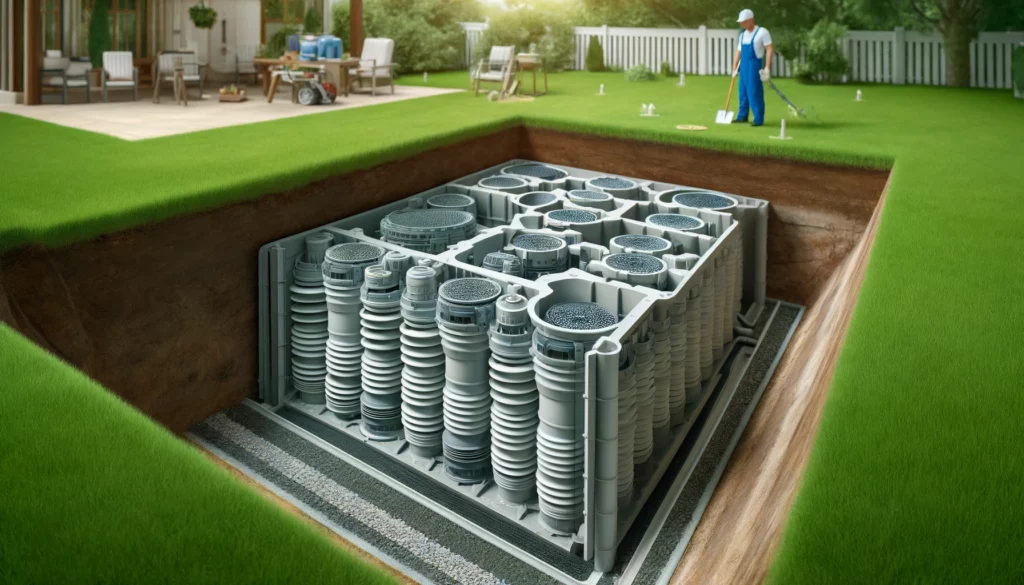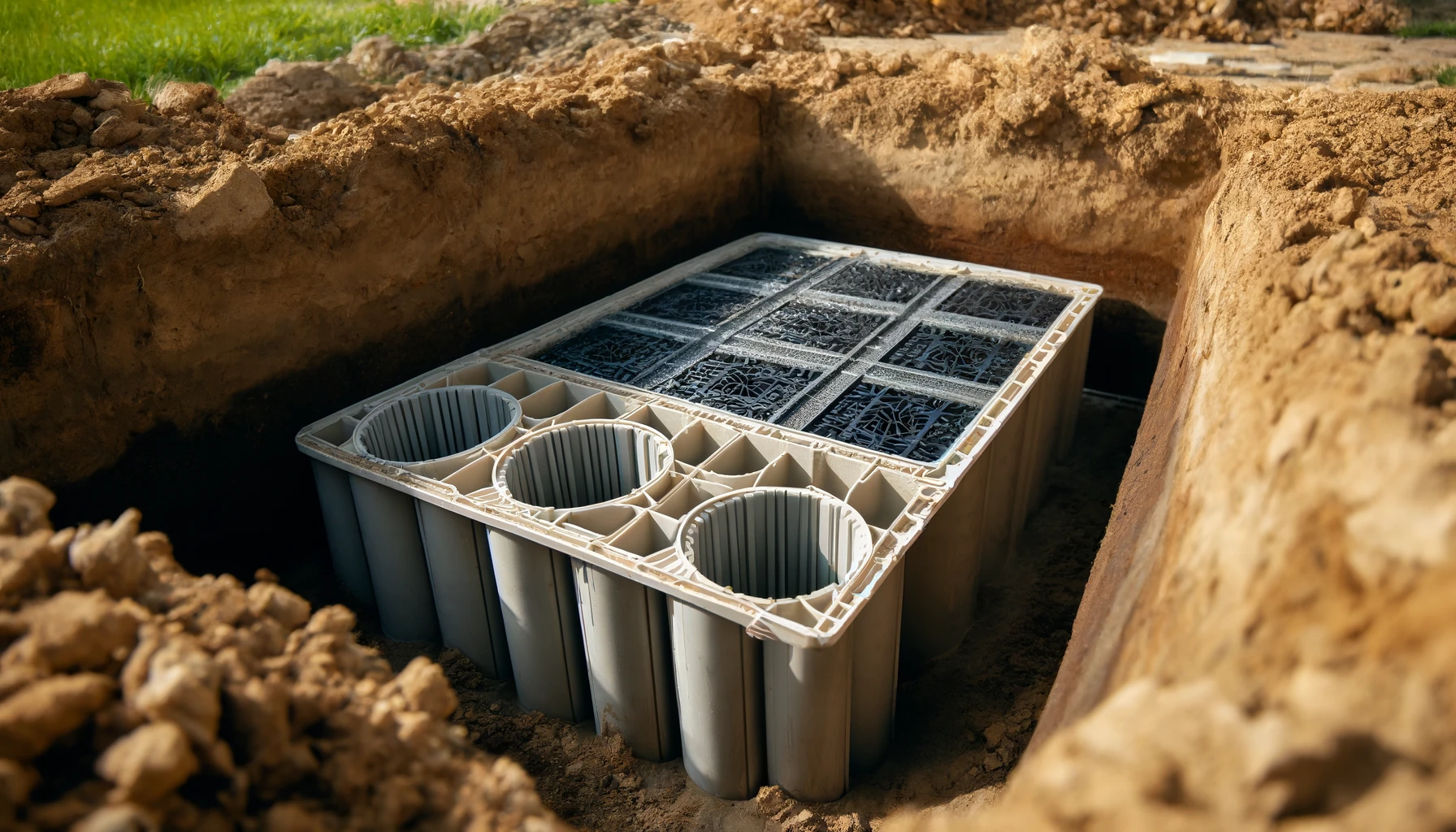Maintaining an adequate septic system is crucial for any property, and using top-quality infiltrator panels can make all the difference. Infiltrator panels are an innovative solution designed to enhance the efficiency and longevity of septic systems. In this article, we’ll dive deep into what infiltrator panels are, their benefits, how they work, and why they’re a top choice for septic systems. By the end of this article, you’ll have a comprehensive understanding of infiltrator panels and how they can improve your septic system.
What Are Infiltrator Panels?
Infiltrator panels are a modern advancement in septic system technology. Unlike traditional pipe and gravel systems, infiltrator panels provide a more efficient way to distribute wastewater into the soil. These panels are made from durable, high-density plastic and are designed with a series of chambers that allow for optimal wastewater treatment and soil absorption.

Benefits of Using Infiltrator Panels
Using infiltrator panels in your septic system offers several advantages:
- Increased Efficiency: The design of infiltrator panels allows for better distribution of wastewater, which leads to improved treatment and absorption by the soil.
- Cost-Effective: While the initial cost of infiltrator panels may be higher than traditional systems, their efficiency and durability can lead to significant long-term savings.
- Space-Saving: Infiltrator panels require less space than traditional pipe and gravel systems, making them ideal for properties with limited space.
- Durability: Made from high-density plastic, infiltrator panels are resistant to damage and can last for many years without needing replacement.
- Environmental Benefits: By enhancing the treatment and absorption of wastewater, infiltrator panels help protect the environment by reducing the risk of groundwater contamination.
How Do Infiltrator Panels Work?
The working mechanism of infiltrator panels is relatively straightforward yet highly effective. When wastewater enters the septic tank, it undergoes primary treatment, where solids settle at the bottom, and oils and grease float to the top. The partially treated wastewater then flows into the infiltrator panels. Here’s a step-by-step breakdown:
- Distribution: The infiltrator panels distribute the wastewater evenly across a larger area.
- Aeration: The design of the panels promotes aeration, which is essential for the aerobic bacteria that break down the waste.
- Infiltration: The chambers in the panels allow the wastewater to infiltrate the soil gradually, ensuring thorough treatment before it reaches the groundwater.
Installation Process
Installing infiltrator panels is a straightforward process but should always be carried out by a professional. Here are the general steps involved:
- Site Assessment: A professional will evaluate your property to determine the best location for the septic system and infiltrator panels.
- Excavation: The area is excavated to the required depth and dimensions to accommodate the panels.
- Panel Placement: The infiltrator panels are placed in the excavated area, ensuring they are level and properly aligned.
- Connection to Septic Tank: The panels are connected to the outlet pipe of the septic tank.
- Backfilling: The excavated area is backfilled with soil, ensuring the panels are securely covered.
Why Choose Infiltrator Panels Over Traditional Systems?
Choosing infiltrator panels over traditional pipe and gravel systems comes with numerous advantages. Here are some key reasons:
- Efficiency: Infiltrator panels are designed to maximize the efficiency of wastewater treatment and soil absorption.
- Maintenance: These panels require less maintenance compared to traditional systems, saving time and money in the long run.
- Adaptability: Infiltrator panels can be used in various soil types and conditions, making them a versatile solution for different properties.
- Environmental Impact: By promoting better wastewater treatment, infiltrator panels help reduce the risk of environmental contamination.
Common Myths About Infiltrator Panels
Despite their benefits, several myths surround the use of infiltrator panels. Let’s debunk some of the most common ones:
- Myth 1: Infiltrator panels are too expensive.
- Reality: While the upfront cost may be higher, the long-term savings on maintenance and replacements make them a cost-effective choice.
- Myth 2: They are difficult to install.
- Reality: Installation is straightforward for professionals, and the process is often quicker than installing traditional systems.
- Myth 3: They don’t work in all soil types.
- Reality: Infiltrator panels are designed to function effectively in various soil conditions, including clay and sandy soils.
Tips for Maintaining Your Septic System with Infiltrator Panels
Maintaining your septic system is essential for its longevity and performance. Here are some tips to keep your system in top condition:
- Regular Inspections: Schedule regular inspections to ensure the system is functioning correctly and to catch any issues early.
- Pump the Tank: Have your septic tank pumped every 3-5 years, depending on usage and the size of the tank.
- Mind What You Flush: Avoid flushing non-biodegradable items, chemicals, and excessive grease down the drains.
- Conserve Water: Use water-saving fixtures and be mindful of water usage to prevent overloading the system.
- Protect the Drain Field: Keep heavy vehicles and equipment off the drain field to avoid damaging the infiltrator panels and the system overall.
Understanding the Importance of Infiltrator Panels
Infiltrator panels have revolutionized the way we manage wastewater treatment in septic systems. These high-quality panels are designed to offer superior performance compared to traditional systems. By enhancing the efficiency of wastewater distribution and promoting better soil absorption, infiltrator panels ensure that your septic system operates optimally for years to come.
Essential Features of Infiltrator Panels
- Durability: Constructed from high-density plastic, infiltrator panels are built to last.
- Efficiency: The unique design allows for better aeration and distribution of wastewater.
- Space-Saving: Ideal for properties with limited space due to their compact design.
Why Infiltrator Panels Are a Smart Investment
Investing in infiltrator panels is a wise decision for any property owner looking to improve their septic system. Not only do they offer long-term savings, but they also contribute to environmental protection by ensuring wastewater is treated effectively before reaching the groundwater.
By choosing top-quality infiltrator panels, you’re ensuring the longevity and efficiency of your septic system, providing peace of mind and a cleaner environment.
Conclusion
Infiltrator panels represent a significant advancement in septic system technology, offering a range of benefits that make them a superior choice over traditional systems. From increased efficiency and durability to cost-effectiveness and environmental benefits, these panels are designed to enhance the performance of your septic system. By understanding how they work, the installation process, and their advantages, you can make an informed decision that will ensure the longevity and reliability of your septic system.
For more information on top-quality infiltrator panels and how they can benefit your septic system, don’t hesitate to contact WasteWater Supply. Our experts are here to help you make the best choice for your property.

